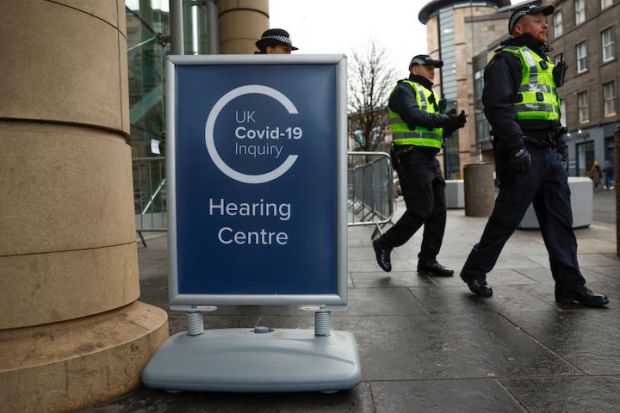Are Covid cases doubling or not? And if so, in what time frame? If you listened to Boris Johnson and chief scientific adviser Patrick Vallance, you’d be forgiven for being confused. The Prime Minister said this week:
‘The chief medical officer and chief scientific adviser warned that the doubling rate for new cases could be between seven and 20 days.’
In fact, Vallance had said this:
‘At the moment we think that the epidemic is doubling roughly every seven days.” And added, “It could be a little bit longer – maybe a little bit shorter – but let’s say roughly every seven days.’
So what’s going on? In order to understand what is happening, it’s important to follow four steps when looking at Covid case numbers as reported each day:
1. Work out what time frame you want to look at: you can either choose the date the specimen was taken (‘specimen date’) or the date the results were reported.
It is best here to choose the specimen date, not the reporting date. Why? Because the actual test could have occurred some time before (symptoms could be even earlier) as opposed to the date of reporting, which can fluctuate due to delays in reporting. This is a similar problem to delays in the reporting of deaths that led to changes in the way they are reported. And the results (as you can see below) vary considerably:
Cases by Specimen date

For September 2020, using the government’s published data, you will see that in England the cases based on the date the specimen was taken were 2,614 on 2 September and increased by 1,098 (42 per cent) to 3,712 over a two-week period by the 16 September. (By this coming Monday, the case numbers will be sufficiently stable to further assess the changes in case numbers for the 23 September.)
Cases by date reported
Analysing the data by date of reporting gives a very different result (see the graph below). On 2 September, there were 1,239 cases reported in England. By 16 September, there were 3,396 reported cases, which gives rise to concerns cases are more than doubling.

2. Go back more than five days due to delays in reporting
This allows the reporting delays to come through and the data to ‘stabilise’; data accumulation is like water pouring into a lake, it needs time to settle.
3. Pick the same day of the working week
Weekend data is too variable and the number of people testing positive on the weekend is significantly lower than that observed in the week.
4. Accept some uncertainties in the data due to distortions
Finally, in assessing numbers you should consider the biases (distortions) in the data. Biases might also give you a false reassurance when cases look like they are going down or up. Selection bias, for instance, occurs when individuals differ systematically from the population that you are interested in, and it can lead to a systematic error in the detection of cases.
The time of the specimen collection is a proxy for the day the symptoms started. However, the two dates are likely to be different by several days (think of going to your GP and the delay between symptoms start and the date you get your test done).
Why are the days of symptom kick off important? Because a large body of scientific evidence now shows that in the vast majority of people, the day of symptom onset is the day a countdown starts to the point at which you are likely not contagious. After five to seven days from symptom onset, if you are positive you are not likely to be infectious any longer. However, in the government case numbers, you will be counted as a case, irrespective of when the symptoms started
The ONS Infection Survey uses random sampling to overcome the problem of selection bias. While these data suggest that somewhere between 4,200 and 8,300 people per day are getting the infection, it tells you nothing about the infectious status of the individuals, and the small sample number of cases in the survey (over the latest six-week period 136 people from 118 households tested positive out of 208,730 tests). This gives rise to small sample bias that can lead to chance findings.
The processing of Pillar 1, 2 tests has gone up by 58,788 over the same time, which is relatively the same amount (36 per cent) over the fourteen days (164,358 on the 2nd Sep test processed compared to 223,146 on the 16th). Further to this, any changes in the way tests are processed can give rise to changes in the reporting.
So could ‘the doubling rate for new cases could be between seven and 20 days?’ At the moment, the doubling rate is looking more like 21 days. But don’t take our word for it: with these four simple steps, you should be able to keep this under review and assess whether cases are rising, or falling, and over what time period.
<//>
Got something to add? Join the discussion and comment below.
Get 10 issues for just $10
Subscribe to The Spectator Australia today for the next 10 magazine issues, plus full online access, for just $10.




















Comments
Don't miss out
Join the conversation with other Spectator Australia readers. Subscribe to leave a comment.
SUBSCRIBEAlready a subscriber? Log in